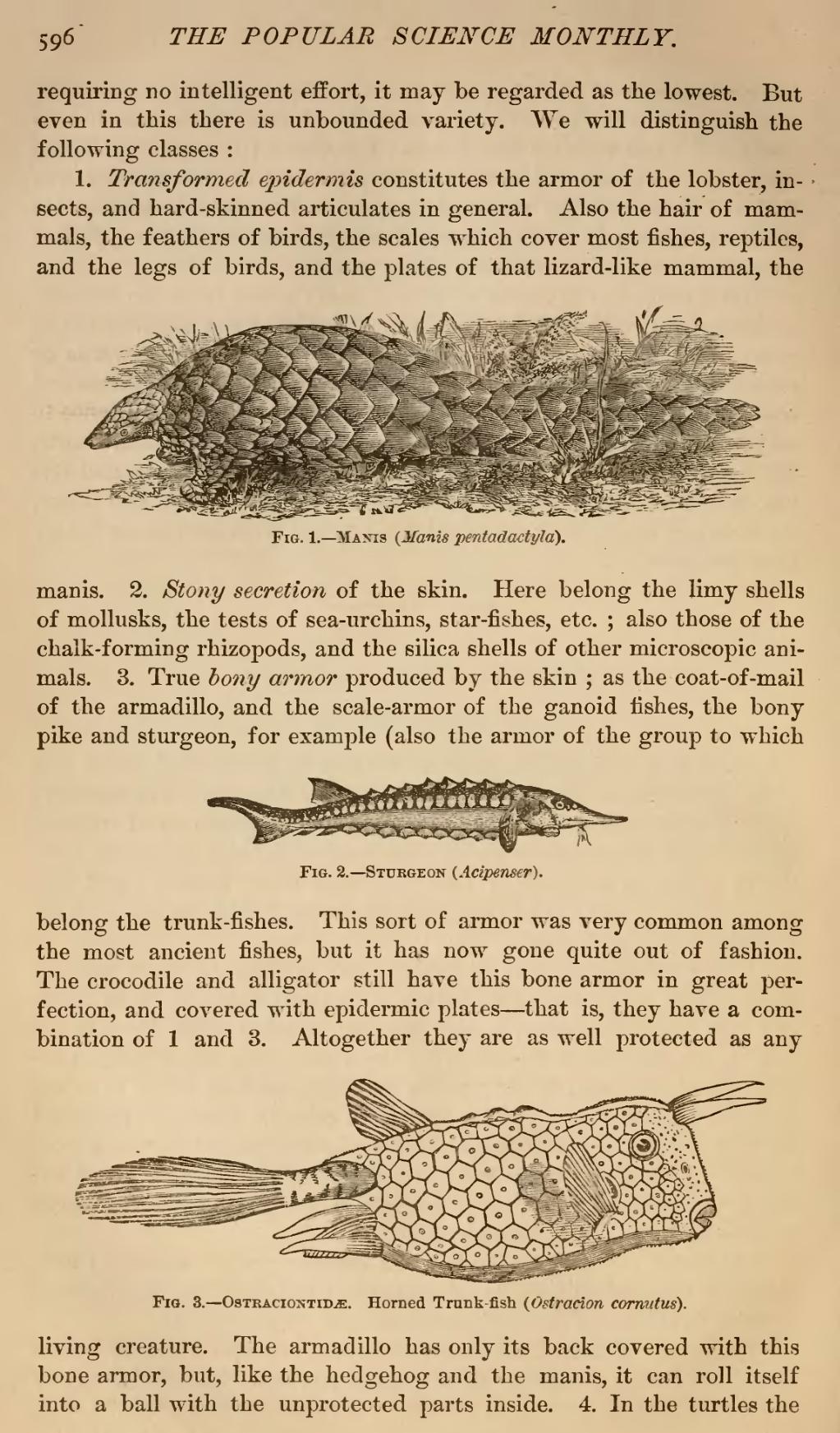requiring no intelligent effort, it may be regarded as the lowest. But even in this there is unbounded variety. We will distinguish the following classes:
1. Transformed epidermis constitutes the armor of the lobster, insects, and hard-skinned articulates in general. Also the hair of mammals, the feathers of birds, the scales which cover most fishes, reptiles, and the legs of birds, and the plates of that lizard-like mammal, the

Fig. 1.—Manis (Manis pentadactyla).
manis. 2. Stony secretion of the skin. Here belong the limy shells of mollusks, the tests of sea-urchins, star-fishes, etc.; also those of the chalk-forming rhizopods, and the silica shells of other microscopic animals. 3. True bony armor produced by the skin; as the coat-of-mail of the armadillo, and the scale-armor of the ganoid fishes, the bony pike and sturgeon, for example (also the armor of the group to which

Fig. 2.—Sturgeon (Acipenser).
belong the trunk-fishes. This sort of armor was very common among the most ancient fishes, but it has now gone quite out of fashion. The crocodile and alligator still have this bone armor in great perfection, and covered with epidermic plates—that is, they have a combination of 1 and 3. Altogether they are as well protected as any

Fig. 3.—Ostraciontidæ. Horned Trunk-fish (Ostracion cornutus).
living creature. The armadillo has only its back covered with this bone armor, but, like the hedgehog and the manis, it can roll itself into a ball with the unprotected parts inside. 4. In the turtles the

